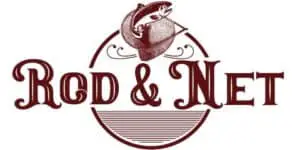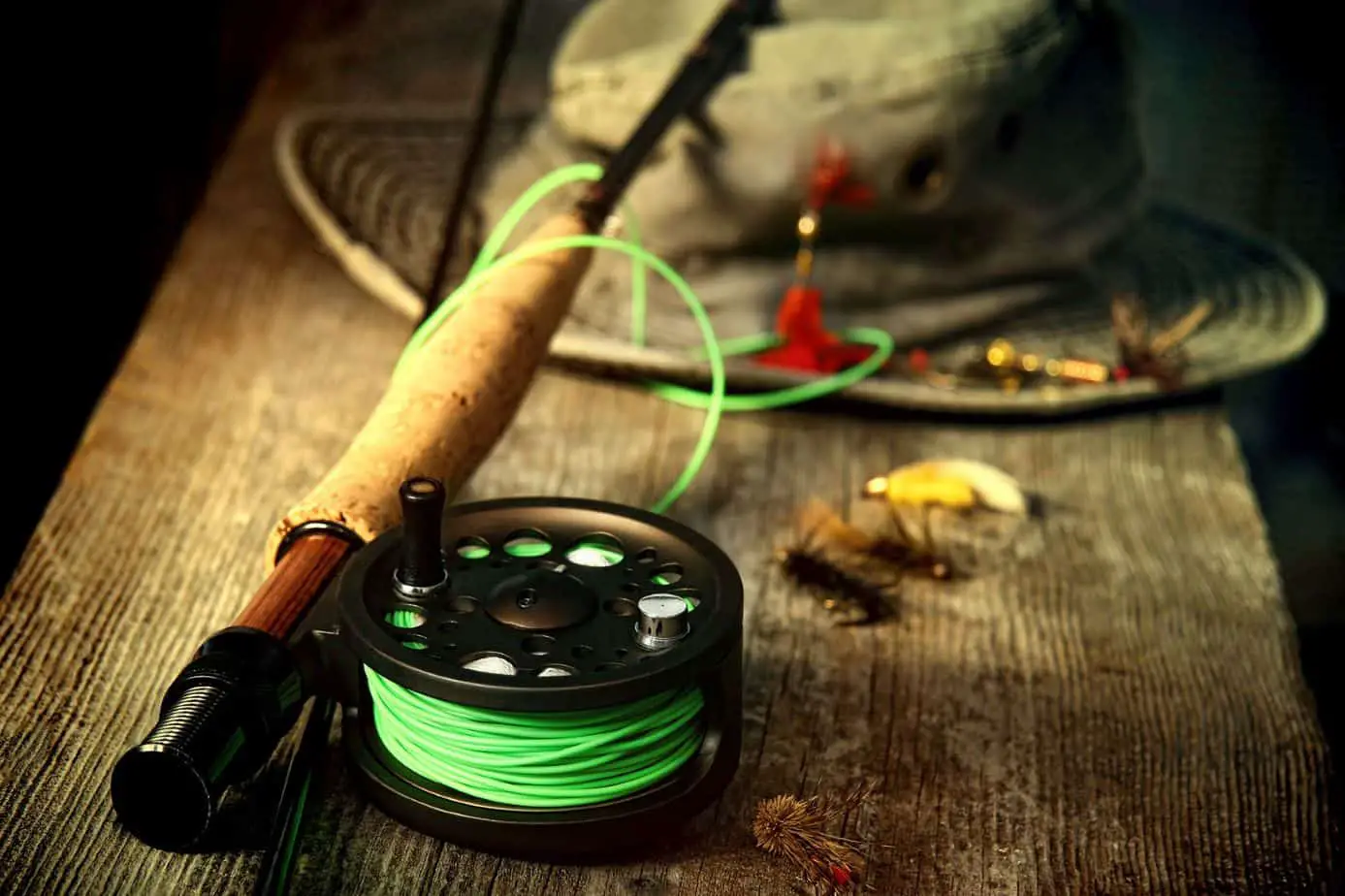Are you looking to dive into fly fishing? Well, getting started may seem like a daunting task, but it isn’t too bad when you know what you need to get. The key is having a list of items that you know are necessary and some that are optional. What is the best fly-fishing gear for beginners?
Every entry-level fly fisher needs four essential pieces of equipment. Some optional pieces of gear will make your time fishing much easier as well.
- Fly Fishing Rod
- Fly Fishing Reel
- Fly Line
- Flies
- Storage
- Optional Fly Fishing Gear
Here are some of the best fly-fishing gear for the beginning angler.
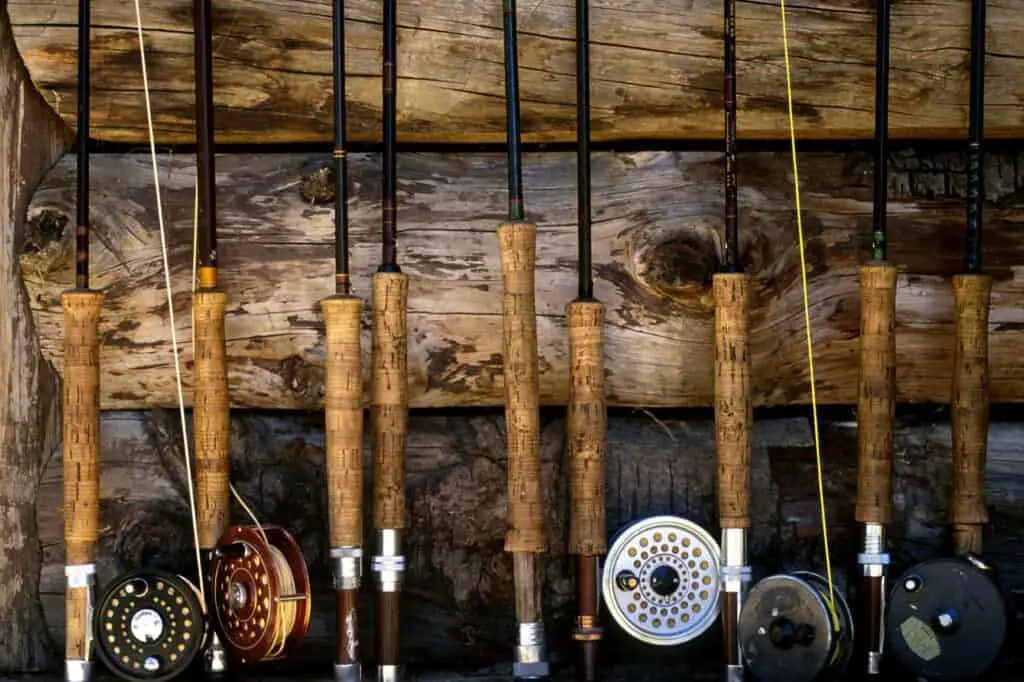
Fly Fishing Rods
First things first, you need a fly rod. These rods are very different from the ones used with other styles of fishing. To figure out what rod will best suit you, you need to be familiar with how fly rods are structured and rated by the industry.
The first aspect of classification is called “action.” A rod’s action refers to its flexibility, stiffness, strength, and ability to handle fish of all sizes. This is an essential factor because different fish might require different actions.
Types of action include:
- Fast
- Extra fast
- Slow
- Extra slow
- Moderate
Although it might be an advanced concept to switch up rods for various occasions, having a universal rod that can handle a little bit of everything is vital. But also, understanding the terminology will make the buying experience much more straightforward.
Generally speaking, having a moderate rod is a great starting point. This allows you to cover a broad range of fish and situations. As you get more and more comfortable as an angler, you can venture out and specialize your setups.
The other primary classification is “weight.” This is the main way you can tell what rods are rated for and what they can handle. The weight directly correlates to what kind of line to use. If you have a 4 weight rod, you need 4 weight line.
The weight is where you may need to specialize a little more than the action. Taking on a 15-pound steelhead with a 2-wt. rod will probably not work out very well. On the flip side, a 9-wt. rod is a bit overkill when fishing for panfish, and so on.
Fly Rod Weights
Here is a general scale to follow when looking at fly rod weights and what species they are used to target:
- 1-4: panfish, small bass, small trout
- 4-6: average trout, bass, crappie, small carp, small saltwater species
- 6-8: carp, bass, small steelhead, trout, small salmon, saltwater species
- 8-11: salmon, steelhead, drum, carp
- 11+: larger saltwater species
Shoot for a rod in the 5-10 wt. range allows you to stay pretty close to the center and cover a broader range of fish.
Wondering, “What can I catch by fly fishing?” Read this to find out!
Along the same lines, you need to consider the length of your rod. When fishing a small stream, you want a shorter rod, which allows for shorter and more accurate casts. When it’s wide open, a longer rod will add range to each cast.
Is saltwater fly fishing different from freshwater? In can be, learn more with our article.
Beginner Fly Rods
Now that you know a few of the aspects that go into fly rods, it is time to detail out some fantastic beginner options covering all of the bases and doing an excellent job of introducing you to the sport.
Temple Fork NXT

This rod is a great tool to practice casting, catch some fish, and kickstart your journey into fly fishing.
Redington Crosswater 590

This is a four-piece rod well-made for traveling and getting used to fly fishing. A great perk of this rod is its dependability and strength, even up against big fish.
Orvis Encounter

You can buy the Encounter rod alone or as a combo, and it is an excellent mid-to-low range option for beginning anglers.
You’ll see Orvis come up a lot when talking fly fishing gear. Read this to understand is Orvis a good fly fishing brand.
Orvis Clearwater

The Clearwater is slightly more expensive than some, but it is very versatile and is even a staple amongst experienced anglers.
Pflueger Starter Set

This is a starter set that includes the rod, reel, and line. The Pflueger Starter Set is one of the cheapest offerings and is suitable for children looking to learn to fly fish.
Fly Fishing Reels
Once you have a good rod in your hands, it is time to pair it with a reel. Once you discover a love for fly fishing, you will have difficulty not adding new reels to your collection even when you don’t need them.
Similar to rods, reels are based on the type of line you will be using. This is based on what weight your rod is weighted for. Everything needs to work in perfect harmony for the best possible results.
If you have a 6-wt. rod, you need to invest in a 6-wt. reel. Sometimes reels are rated to fit several weights, so you have a little bit of liberty in that aspect. For example, that 6-wt. rod and probably be accompanied by a 5/6-wt. reel.
Fly reel weight is a significant aspect of the reel you need to keep in mind, but there are other construction considerations.
Fly Reel Construction
Some additional aspects for reel construction include what material the reel is made of, what type of drag system is used, and the size of the reel’s arbor. Here is the breakdown of each of these components.
Material
Fly reels are made of three primary materials. Each one has a different threshold for wear and tear and shelf life.
- Plastic
- Cast Aluminum
- Machined Aluminum
Plastic reels are far cheaper, but they will not last nearly as long as the super-strong machined aluminum. In turn, the machined aluminum is the most expensive option, and the cast aluminum is the middle of the road.
Drag System
There are two drag systems on most reels.
- Sealed
- Non-sealed
This might be a bit advanced, but the drag type correlates with what kind of fishing you do. Saltwater fishing reels usually use sealed drag, whereas, more common, small game fly fishing can be done with a non-sealed drag.
Arbor size
The arbor size is the diameter of the spool. This is where your line sits, and the bigger the arbor, the more line that can be held and stripped in one pull.
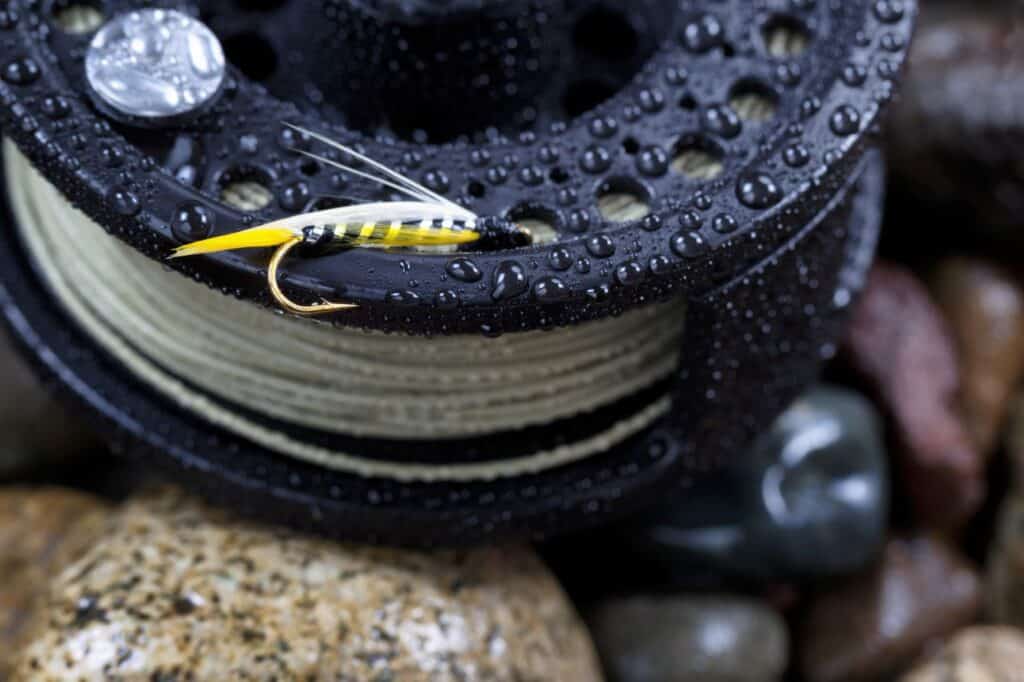
Beginner Fly Reels
Once you understand a reel’s anatomy and what to look for, here are a few great reel options for beginners.
Orvis Clearwater

If the Orvis Clearwater rod is appealing to you, grabbing the coinciding reel is the next step. Having a rod and reel made to work together is a huge perk and worth it. Plus, it is very budget-friendly.
Echo Bravo

Echo is a fly-fishing company with several lines, and the Bravo is at the higher end of the beginner spectrum. Investing in this will cost a little more upfront, but it will last a long time with proper care.
Redington Behemoth

As one of the more affordable on this list, the Redington Behemoth is an excellent option for budget anglers who want to get started without breaking the bank.
Echo Ion

Because Echo is a great reel brand, especially for beginners, it has made this list twice. The Ion is a tremendous mid-to-low end reel that still delivers good quality for you to get the hang of fly fishing.
Fly Line
The type of line you use needs to coincide with the rod and reel setup you have. Because it is so intertwined with everything else, the fly fishing line is often made and sold by the same rod and reel companies. For example, companies like Orvis and Cabela’s have their hands on both sides of these products.
Having the right line for your setup is everything. This will make or break your ability to cast. Because flies are so light, it is the line’s weight that creates the ability to cast. Unlike baitcasting or spinning, where the line is super lightweight, the lure provides to necessary weight.
In some instances, the line is the last thing you will buy in terms of its setup. This is because you are basing the type of line on what rod and reel you already bought.
Thankfully, this makes the buying process very easy and straight forward. Because everything in fly fishing is clearly labeled, you will instantly know what type of line is needed.
Having a leader and tippet are also important parts of the setup. Fly line is weighted and usually colored so that you can see it well. So having a clear monofilament leader is crucial.
A monofilament leader helps the fly have a more natural presentation when entering the water. The leader connects to the line, and the tippet attaches the leader to the fly.
Fly Land Brands
Here are some fantastic fly line brands that are worth looking into:
Orvis

A huge selling point of Orvis line is that it pairs perfectly with their rods and reels. For example, if you decide to get the Orvis Clearwater combo, the company makes the Clearwater line. This makes the entire buying process much more manageable.
After all, buying everything you need when starting can be super overwhelming. Orvis does a great job of making it super simple.
RIO

RIO is one of the industry leaders when it comes to fly fishing line. For the past 20 years, RIO has supplied anglers with line, leaders, and tippets.
Airflo

Airflo is a U.K. company that has several fly line variants and models. Each one offers very specific uses and works to get the most value possible.
Piscifun

Another company that makes line, rods, reels, and accessories is Piscifun. Although they are not as well-known as Orvis, having a company where you can buy almost everything is very helpful.
Scientific Anglers

Scientific Anglers is a high-end brand that has an excellent reputation in the fishing line industry. This is one of those brands where you get what you pay for.
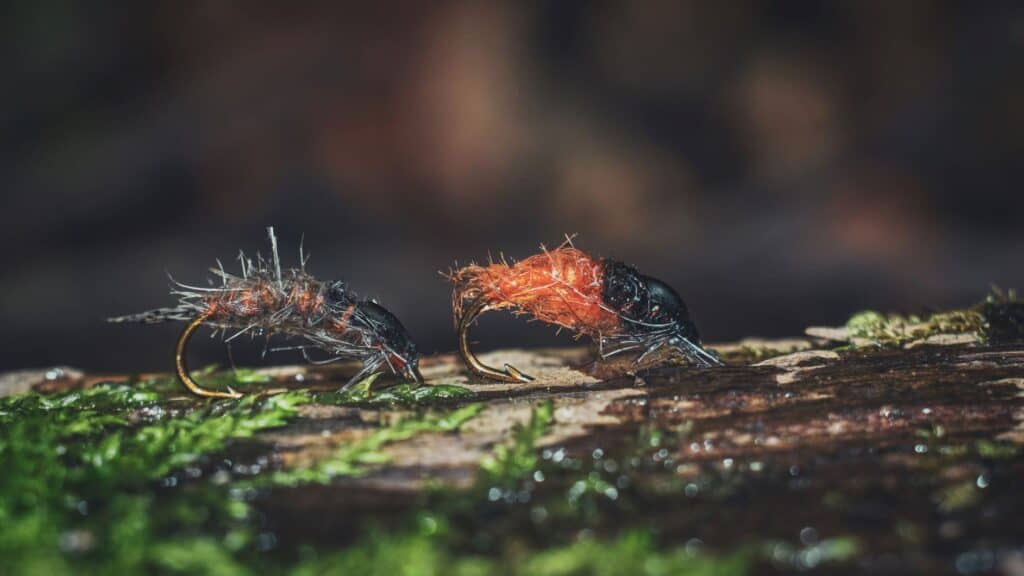
Flies
One of the most fun parts about being a fly fisherman is building an arsenal of flies that cover various scenarios. This is also where you can have a lot of creative freedom.
There are many colors, types, variations, and sizes of flies. This makes the process of acquiring flies quite fun.
Wondering what is the difference between wet flies and dry flies? Read our article to learn more.
The main types of flies:
- Caddisfly
- Mayfly
- Stonefly
- Terrestrials
- Everything Else
Because fly fishing flies are there to imitate real flies, there are different stages to consider. Nymphing is its sector of the angling world, but it uses flies that emulate the nymphing development stage. A lot of the traditional fly-fishing methods use flies in either the emerging stage or adult stage.
Caddisfly

A popular river fly that many anglers imitate is the Caddisfly. At the end of May and beginning of June, the Caddisfly is hatching and is at its most populous point. Using these flies on rivers and other big moving water systems can be very beneficial.
Mayfly

Mayfly is one of the most well-known and fished-with flies out there. Every May, the Mayfly hatch begins, and this is when these flies can be very productive.
Stonefly

As summer moves on, the stonefly starts to take center stage in some areas. In the few-week window towards the end of July and into August, this is a solid fly to use.
Terrestrials

Terrestrials are sometimes born or hatched in the water but live a majority of the time on land. This includes ants, beetles, grasshoppers, and crickets. Using these is a cool way to mix it up and show a different presentation.
Everything Else
Although those are some of the biggest and most popular flies out there, there are so many more. Some flies that fall into the “other” category include midges, leeches, scuds, and buggers. This is where a lot of creativity can come into play.
Especially on waterways that experience a lot of pressure, it can pay off big to mix it up and throw something no one else is. The key with the non-fly flies is to get out of your comfort zone and see what can work.
All of these styles come in varying colors, sizes, and variations. They are great for anglers who want a particular attribute for their flies.
Storage
One of the more affordable aspects of fly fishing is storage. While also not super cheap, you probably won’t be shelling out hundreds of dollars, at least at the beginning.
The first aspect of storage is for flies. Flies need to be stored properly. They need to retain their integrity, so they don’t get ruined.
Storage of your rod and reel is also crucial. No one wants to invest hard-earned money into new gear and then have it break in transition.
Since fly rods are so long, they are often collapsible into three or four pieces. The industry has done a great job creating high-quality cases and bags to store and transport fly rods safely.
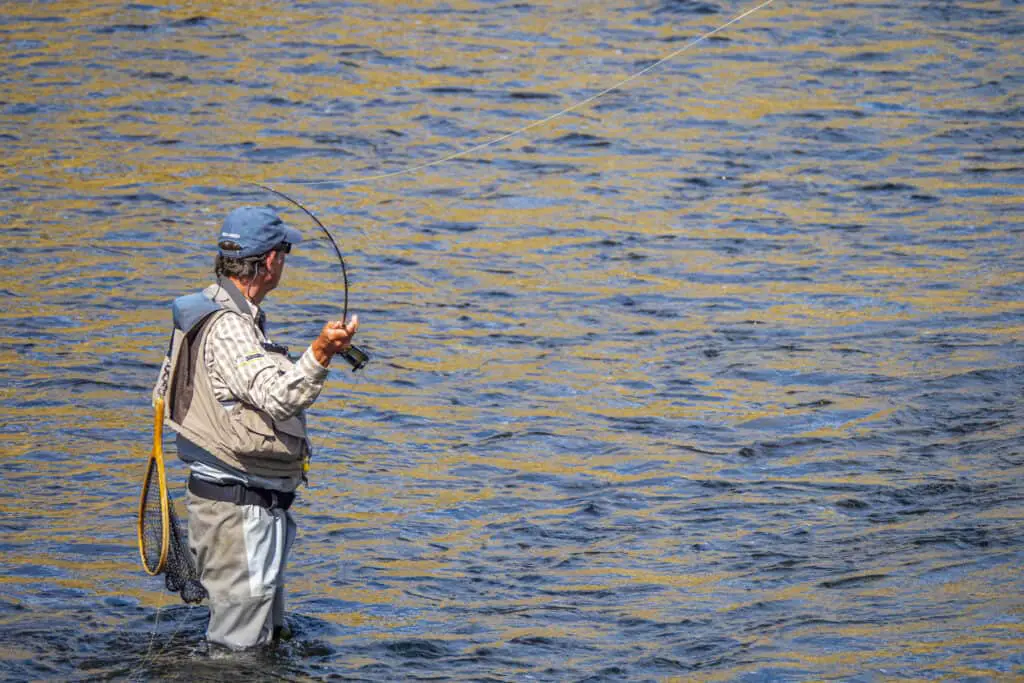
Optional Fly Fishing Gear
All of the above equipment is essential for fly fishing. However, there are a few things that aren’t needed but can make your experience much better.
Once you are all set to start fly fishing, the best add-on is waders.
Waders allow you to wade through rivers and streams to seek out your next trophy. Sure, putting on your bathing suit and hitting the water might sound like a good idea in the dog days of summer, but it isn’t always that simple.
Generally, you need some protection from the elements, especially when the weather isn’t on your side. Waders accomplish this quickly and efficiently. Although they may seem like an expensive buy, it is an investment and could last you many years.
Another great add-on is the fisherman’s vest. This is what every stereotypical angler wear in movies, shows, etc. Although some think it is tacky and old-fashioned, it is convenient and helpful.
With a vest, you can keep any tool you may need right there. This includes more flies, plyers, a scale, or anything else you may need.
With other types of fishing, it often takes place on a boat with ample storage space. Well, most fly fishing does not happen on a boat, so your only way to keep things close is by putting them on your body.
Conclusion
Hopefully, this information sets you up for a successful first fly fishing trip and makes the buying process a little bit easier. It can be daunting, especially initially, but as long as you understand what goes into each piece and why it is all-important, you can get through it!
Now that you have your gear, read up on the best fly fishing in Montana and plan your next trip!
Good luck, and have fun!
